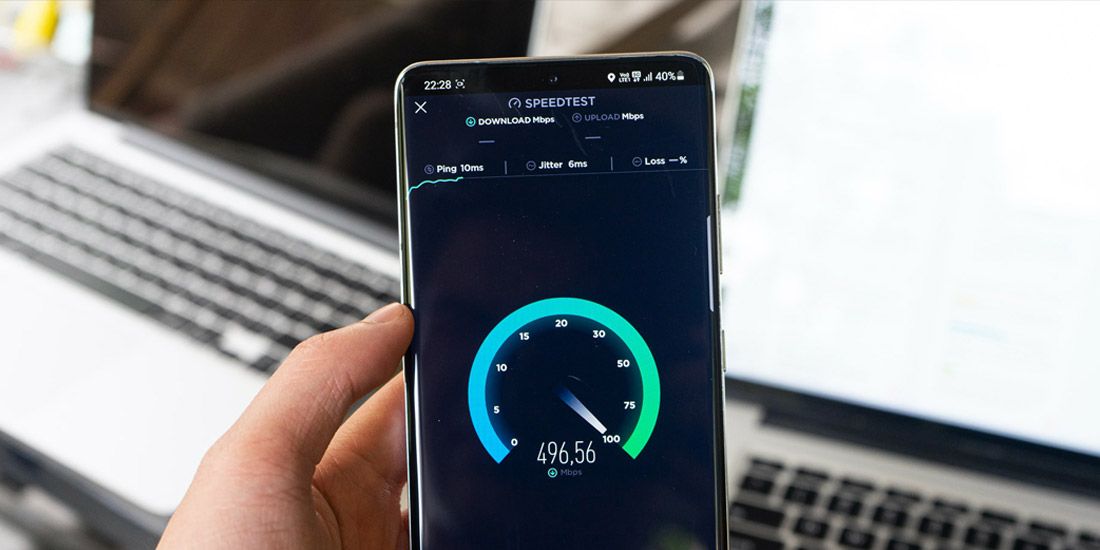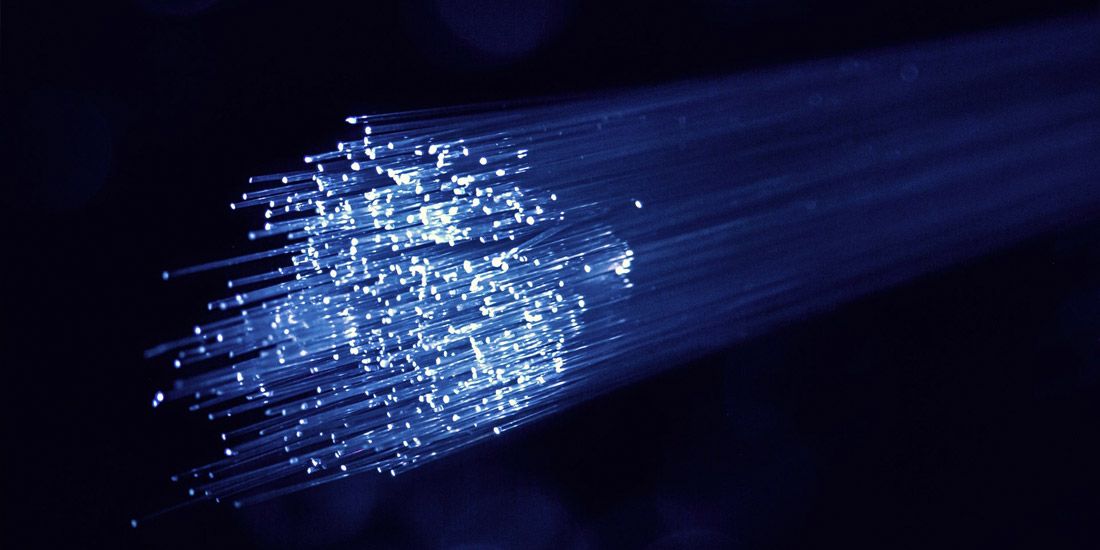What is the difference between superfast and ultrafast broadband?
7th July, 2022 | Home / Blog / Gaming broadband / What is the difference between superfast and ultrafast broadband?Reading time: 7 minutes

What is the difference between superfast and ultrafast broadband? This is a question you may have asked yourself as you’ve seen new broadband packages being rolled out, all offering higher average download speeds and a range of full fibre services.
Most UK households have been used to standard broadband connections for their online and digital activities. But, for the past few years, many people have started to enjoy superfast and ultrafast broadband connections.
These new fibre broadband connections offer today’s users a quantum leap in performance compared to what was available when people first started using the internet in UK homes.
Thirty years ago, you had much less choice of internet service provider, and your connection was provided through your standard phone line.
Today, reliance on the internet and online activities are much more crucial to people of all ages. UK households now require much faster speeds for online work, play, and communications.
We’ll explain the difference between ultrafast and superfast broadband services, how much they cost, and when you might see them in your area.
The difference between standard ADSL, superfast, and ultrafast broadband
Use of the term ‘fast’ will probably indicate to you that the main difference between these broadband services is speed.
Of course, there are other factors to do with technology, but different speeds are the main difference.
Let’s take a look at the broadband speed of each of these:
- Standard ADSL Connection. Will typically offer download speeds of less than 24 Mbps. These connections are via copper wires from your home to the nearest telephone exchange.
- Superfast Connection. Instead of copper cables all the way to your home, Superfast technology uses fibre for part of the connection. This means you get a much quicker speed between 24-300Mbps.
- Ultrafast Connection. The next type of connection is called ultrafast broadband. With this, the average speed jumps again to between 300-1000Mbps. Compared to standard broadband, these speeds are phenomenal. Ultrafast connections are full fibre services along the entire route from your home all the way to the exchange.
What’s ADSL? ADSL stands for asymmetric digital subscriber line. What’s the difference between ADSL and fibre? Discover the answer here.
Superfast Broadband

Of course, you will likely have had these download speeds quoted to you many times by various UK broadband providers. But what do they mean for you in practical terms? How can you make sense of them?
How fast is superfast broadband for online activities?
When is broadband Superfast? Your broadband connection speed must be between 24-300 Mbps. On average, you can expect speeds of 35-213Mbps.
At these download speeds, you could stream between 4-30 HD movies simultaneously.
Airband offers 4 fibre broadband packages, with a download speed of up to 900Mbps and an upload speed up to 200Mbps. The packages start from 150Mbps and range up to 900Mbps and in between.
How much is superfast broadband?
You have a choice of several superfast broadband providers, including Virgin Media, Sky, BT, and Airband. Monthly costs vary between providers, and you may or may not have to pay an installation fee. We don’t. We offer broadband with no upfront costs.
Here are examples of superfast broadband costs:
Fibre 150 – £30/month
Fibre 300 – £35/month
Ultrafast Broadband

For your fibre broadband connection to be considered ultrafast, it must be within the 300-1000Mbps range. The connection also must be made up entirely of fibre optic cables.
How fast is ultrafast broadband for online activities?
These broadband connections allow you to simultaneously stream between 50 to 150 HD movies. We think that’s pretty reasonable, even for the most ardent movie fan!
How much is ultrafast broadband?
Again, there are several providers offering Ultrafast connections, with a variety of options for monthly tariffs and installation costs. Here are a couple of examples:
Fibre 600 – £45/month
Fibre 900 – £55/month
What are the benefits of an ultrafast broadband service?
Ultrafast connections are capable of doing everything your regular broadband service can do (and more). But, you’ll do them much quicker!
Here are a few activities that could benefit from a better download and upload speed, using ultrafast broadband:
- File transfers. Transferring large files can take a long time using traditional broadband. With an ultrafast fibre connection, these tasks are practically instant, so no more waiting around to send large files.
- Family use. How many arguments start over someone “hogging the broadband?” With ultrafast connections, your whole family has sufficient bandwidth to use for their online activities.
- Streaming TV and video. You can say goodbye to buffering for good! Ultrafast fibre broadband allows you to perfectly stream several HD movies at the same time.
- Game downloads. Playing online games doesn’t necessarily need lightning-fast speeds. But, when it comes to downloading the latest version of your favourite game, the files are hefty. Ultrafast broadband means you can get these downloaded quickly and get back to playing sooner.
When will ultrafast connections be available in my area?
Ultrafast fibre connections are being rolled out across the UK, but you might not yet have them in your area. You can check availability in your area with our broadband coverage checker.
What is fibre optic cable?

Fibre optic cable is what enables ultrafast and superfast speeds for your broadband connection. It is a network cable containing strands of insulated glass fibres.
These strands transmit digital information using light. That means it is faster than traditional copper cables. It also means that information can be transmitted further, and with more capacity.
The effect of using fibre is that your average download speed for internet, TV, phones, etc. is massively increased. Check out our fibre optic broadband deals.
What is fibre-to-the-cabinet?

Fibre-to-the-cabinet (FTTC) is another term you may have heard about. This broadband technology also utilises fibre cable, but not for the entire connection.
The fibre leg typically ends at the street cabinet. You will, no doubt, have seen telephone engineers working at such cabinets in your street.
As it only partially uses fibre, FTTC connections are slower than full fibre connections. But they still provide superfast broadband speeds.
What is FTTP Broadband?

Fibre-to-the-premises (FTTP) offers unparalleled speed and capacity for your home broadband connection. As the name suggests, it is a full fibre connection, and it is extremely fast.
This means the entire connection, from the telephone exchange to your premises, consists of fibre cable. As well as providing higher speeds and an incredible level of performance, it means your broadband is future-proofed to deal with technology yet to come.
Before you can have FTTP installed in your home, the cable network first must be installed in your local area. You will, no doubt, have noticed roads and pavements being dug up by engineers doing this. Although you might have considered this an inconvenience at the time, you will be glad it’s been done as you start to enjoy the benefits of an ultrafast connection.
Better broadband paving the way

These types of faster broadband are changing the way use the Internet and go about our online activities. Your streaming, file transfers, gaming, and live TV experience will all be faster and smoother as ultrafast and superfast connections become the norm.
You can check if our engineers can get to your premises to set you up with broadband. Use our broadband coverage checker.
Check availability:
You might also like:
- What’s the difference between ADSL and fibre?
- How much broadband do I need?
- What is fibre broadband?
Related Articles
Check availability:


